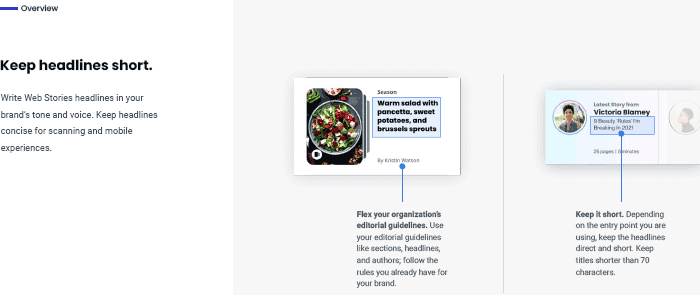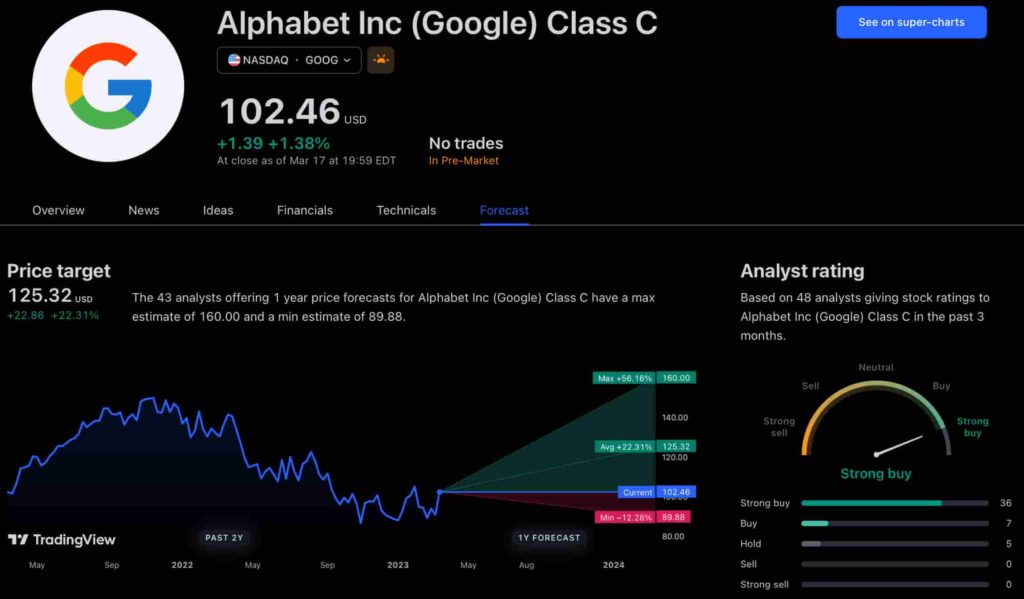The new app is called watchGPT and as I tipped off already, it gives you access to ChatGPT from your Apple Watch. Now the $10,000 question (or more accurately the $3.99 question, as that is the one-time cost of the app) is why having ChatGPT on your wrist is remotely necessary, so let’s dive into what exactly the app can do.
NEWS
Earn More with Google’s Web Stories Playbook via @sejournal, @martinibuster
Google published a Web Stories Playbook that provides in-depth information on how to succeed with the new format. At over one hundred pages long the document begins with an overview and proceeds to progressively more advanced advice designed to encourage more traffic, engagement and earnings.
Web Stories
Web Stories is a new format that Google shows in Search and Discover. The format is designed to provide “snackable” content to consumers who are on the go.
But as the Web Stories Playbook makes clear the new format has many uses that can help publishers make their websites more engaging with site visitors and increase earnings from advertising or even affiliate links.
Web stories helps publishers reach new audiences. They can also keep visitors on the site longer to view more advertisements, the format can be used to convert visitors into sales or inspired to click on affiliate links.
Web stories can be monetized in multiple ways, including affiliate links, sponsored content, programmatic ads or directly sold advertisements.
Google also provides support in the form of a WordPress plugin that makes it easy to create Web Stories.
The new playbook is intended to teach publishers how to incorporate web stories into a website.
Screenshot of a Page from the Web Stories Playbook


Although the Web Stories Playbook is over one hundred pages long, each page contains two paragraphs or less of words. This format makes it easy to read and understand.
Advertisement
Continue Reading Below
What’s Inside the Web Stories Playbook
The playbook is divided into three sections:
- Overview
Describes how web stories are useful to publishers for finding new audiences and giving them a faster way to consume content. - Entry Points
Describes the different ways web stories can integrate into a website, and how to customize how site visitors engage with them. - More Design Details
Offers a comprehensive review of best practices in design for encouraging more engagement with readers.
This is how the Web Stories Playbook describes its purpose:
“Get the most out of Web Stories.
This playbook will help you incorporate Web Stories into your website, so you can reach new audiences and help readers connect with content they’ll love.”
Advertisement
Continue Reading Below
Entry Points
The Entry Points and More Design Details section cover their topics in depth. For example there are five different kinds of “entry points” that the playbook focuses on one by one so that a publisher will attain an expert level of understanding.
The Entry Points section describes how there are five different entry points:
- Singleton
- Carousel
- Compact display
- Author highlight
- Dedicated page
Advertisement
Continue Reading Below
Next it shows one by one how the five different “entry points” fit into a web page as part of an overall strategy for engaging visitors.
Lastly, this section links to a Design Kit where files can be downloaded and used to create the different entry points.
Screenshot of Web Stories Design Kit Page


More Design Details: Best Practices
In the More Design Details section the playbook teaches best practices for content and page layout then moves on to how to customize the web stories further.
Advertisement
Continue Reading Below
Screenshot of an Overview Page from the Web Stories Playbook


The document ends with links to three more resources:
- Guide to Using Stories on your Site
- Web Story tools and CMSes
- Technical Documentation for Web Stories
The guide links to a Web Stories GitHub and Slack channel but the Slack link appears to be broken…
Advertisement
Continue Reading Below
Screenshot Showing the Carousels Page from the Web Stories Playbook


Download the Web Stories Playbook
Google’s web stories playbook is over one hundred pages long but most pages are full of illustrations that show the best practices and lessons. So it’s not as long as it may appear to be.
Advertisement
Continue Reading Below
Nevertheless there’s quite a bit of useful information for publishers of all skill levels with the web stories format.
Citations
Read the official announcement
Raise the visibility of Your Web Stories
Download the playbook:
Web Stories Experience Playbook (PDF)
Facebook Faces Yet Another Outage: Platform Encounters Technical Issues Again

Uppdated: It seems that today’s issues with Facebook haven’t affected as many users as the last time. A smaller group of people appears to be impacted this time around, which is a relief compared to the larger incident before. Nevertheless, it’s still frustrating for those affected, and hopefully, the issues will be resolved soon by the Facebook team.
Facebook had another problem today (March 20, 2024). According to Downdetector, a website that shows when other websites are not working, many people had trouble using Facebook.
This isn’t the first time Facebook has had issues. Just a little while ago, there was another problem that stopped people from using the site. Today, when people tried to use Facebook, it didn’t work like it should. People couldn’t see their friends’ posts, and sometimes the website wouldn’t even load.
Downdetector, which watches out for problems on websites, showed that lots of people were having trouble with Facebook. People from all over the world said they couldn’t use the site, and they were not happy about it.
When websites like Facebook have problems, it affects a lot of people. It’s not just about not being able to see posts or chat with friends. It can also impact businesses that use Facebook to reach customers.
Since Facebook owns Messenger and Instagram, the problems with Facebook also meant that people had trouble using these apps. It made the situation even more frustrating for many users, who rely on these apps to stay connected with others.
During this recent problem, one thing is obvious: the internet is always changing, and even big websites like Facebook can have problems. While people wait for Facebook to fix the issue, it shows us how easily things online can go wrong. It’s a good reminder that we should have backup plans for staying connected online, just in case something like this happens again.
NEWS
We asked ChatGPT what will be Google (GOOG) stock price for 2030

Investors who have invested in Alphabet Inc. (NASDAQ: GOOG) stock have reaped significant benefits from the company’s robust financial performance over the last five years. Google’s dominance in the online advertising market has been a key driver of the company’s consistent revenue growth and impressive profit margins.
In addition, Google has expanded its operations into related fields such as cloud computing and artificial intelligence. These areas show great promise as future growth drivers, making them increasingly attractive to investors. Notably, Alphabet’s stock price has been rising due to investor interest in the company’s recent initiatives in the fast-developing field of artificial intelligence (AI), adding generative AI features to Gmail and Google Docs.
However, when it comes to predicting the future pricing of a corporation like Google, there are many factors to consider. With this in mind, Finbold turned to the artificial intelligence tool ChatGPT to suggest a likely pricing range for GOOG stock by 2030. Although the tool was unable to give a definitive price range, it did note the following:
“Over the long term, Google has a track record of strong financial performance and has shown an ability to adapt to changing market conditions. As such, it’s reasonable to expect that Google’s stock price may continue to appreciate over time.”
GOOG stock price prediction
While attempting to estimate the price range of future transactions, it is essential to consider a variety of measures in addition to the AI chat tool, which includes deep learning algorithms and stock market experts.
Finbold collected forecasts provided by CoinPriceForecast, a finance prediction tool that utilizes machine self-learning technology, to anticipate Google stock price by the end of 2030 to compare with ChatGPT’s projection.
According to the most recent long-term estimate, which Finbold obtained on March 20, the price of Google will rise beyond $200 in 2030 and touch $247 by the end of the year, which would indicate a 141% gain from today to the end of the year.
Google has been assigned a recommendation of ‘strong buy’ by the majority of analysts working on Wall Street for a more near-term time frame. Significantly, 36 analysts of the 48 have recommended a “strong buy,” while seven people have advocated a “buy.” The remaining five analysts had given a ‘hold’ rating.

The average price projection for Alphabet stock over the last three months has been $125.32; this objective represents a 22.31% upside from its current price. It’s interesting to note that the maximum price forecast for the next year is $160, representing a gain of 56.16% from the stock’s current price of $102.46.
While the outlook for Google stock may be positive, it’s important to keep in mind that some potential challenges and risks could impact its performance, including competition from ChatGPT itself, which could affect Google’s price.
Disclaimer: The content on this site should not be considered investment advice. Investing is speculative. When investing, your capital is at risk.
NEWS
This Apple Watch app brings ChatGPT to your wrist — here’s why you want it

ChatGPT feels like it is everywhere at the moment; the AI-powered tool is rapidly starting to feel like internet connected home devices where you are left wondering if your flower pot really needed Bluetooth. However, after hearing about a new Apple Watch app that brings ChatGPT to your favorite wrist computer, I’m actually convinced this one is worth checking out.
-

 WORDPRESS7 days ago
WORDPRESS7 days ago13 Best HubSpot Alternatives for 2024 (Free + Paid)
-

 MARKETING6 days ago
MARKETING6 days agoAdvertising in local markets: A playbook for success
-

 SEARCHENGINES6 days ago
SEARCHENGINES6 days agoGoogle Core Update Flux, AdSense Ad Intent, California Link Tax & More
-

 SEARCHENGINES5 days ago
SEARCHENGINES5 days agoGoogle Needs Very Few Links To Rank Pages; Links Are Less Important
-

 SEO5 days ago
SEO5 days agoHow to Become an SEO Lead (10 Tips That Advanced My Career)
-

 MARKETING5 days ago
MARKETING5 days agoHow to Use AI For a More Effective Social Media Strategy, According to Ross Simmonds
-

 PPC4 days ago
PPC4 days ago10 Most Effective Franchise Marketing Strategies
-

 SEARCHENGINES3 days ago
SEARCHENGINES3 days agoGoogle Won’t Change The 301 Signals For Ranking & SEO















